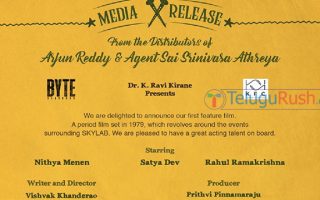This is the third part of the series on screenwriting. Click here for the first part of the series and click here for the second part. This part of the series deals with developing story structure. The story structure is the structural framework that underlies the order and manner of the narrative.

Components of a Story
Before diving into the story structure, it is better to understand the components of a story. The regular stories we see in films tell the tale of a person, place, or incident. All of them form the core of a story with unequal importance. Some stories tell the life experiences of a person and how he evolved, some do narrate the incidents that happened in a place and how the residents react to them, and some do tell the effects of an incident on several people. The following are the basic components of a story:
Plot
A story should have some scenes, which form sequences and which in turn form the plot. The plot is a sequence of events that is often considered equivalent to the story itself.
Setting
A story should happen in a place which could be a house or office, a town, a country, or even a space but it should have a well-defined setting. The setting gives a lot of details without much effort from the writer. For example, a school can hint uniforms, classes, teachers, students, marks, and examinations without showing or narrating something. If the setting is the moon, then the audience can expect spacesuits, zero gravity, astronauts, etc. The setting should be relevant to the plot.
Timeline
A story should happen at a time. The costumes, production design, and Geopolitical conditions depend upon the timeline. There are broad categories of timelines such as pre-historic, ancient, medieval, current, futuristic, etc. Most of the movies have current time which makes the production costs low.
Characters
The characters drive the story forward. The characters could be protagonists, antagonists, prominent roles, supporting cast, or extras. The protagonist leads the story and the antagonist creates problems. The characters need not always be people. For example, in Wall-E, the protagonist is a robot, in Avatar, the protagonist is an alien (initially human).
Central Idea
Every story should have a purpose which is often referred to as the central idea. Without a central idea, the story could become confusing without making a point. The central idea should also address the major conflict of the script. It is the selling point of many scripts and decides the favorable release season. For example, a story about the relationship between a father and his children could collect more if it’s released during Fathers’ day.
The structure of a story depends on these components. The plot decides the importance of other components. Some stories stress only one component while others are not considered seriously. But the filmmaker should always keep these components in mind otherwise an airplane or a mobile phone could show up in a film set in the medieval period.
Structure of the Story
The story structure, as discussed earlier, is the underlying framework of the order and manner of the narrative. The conflict plays a key role in deciding the story structure. The following are the popular story structures used in screenwriting:
- 3-Act structure
- Monomyth or Hero’s journey
- Save the Cat (Blake Snyder)
- Organic development (John Truby)
- Free form
3-Act structure
Act structure is a method that divides the plot into segments (Acts). The 3-Act Structure is a method of Act structure that breaks the plot into 3 major acts divided by plot points. The 3 acts are setup, confrontation, and resolution.
The first act establishes the characters, relationships, and environment. The first plot point or the inciting incident is an on-screen incident that establishes conflict. The second act depicts the protagonist’s attempts to resolve the conflict which makes the condition even worse as the protagonist lacks the necessary skills and almost loses. The second plot point provides the final piece of information required for the protagonist to achieve his goals. The third act resolves the conflict of the story and sets a new equilibrium.
Monomyth or Hero’s Journey
The monomyth or hero’s journey is the story structure that deals with a hero who goes on an adventure and returns victorious. The hero is usually changed or transformed during his journey as he learns new things. The monomyth can be structured into 17 steps which can further be fit into the regular 3-act structure. Most mythological stories and fairy tales follow the structure of monomyth. The structure is highly predictable and depends heavily on narration to make things interesting.
The monomyth has a hero who is initiated into an adventure that he refuses at first but later takes up with the help of a mentor or an aid. The hero crosses his first threshold, faces tests, teams up with allies, and fights against enemies. He finally triumphs and gets his reward. He finally returns to his world changed or transformed.
Save the Cat
Save the cat is the modified version of the 3-Act structure which focuses heavily on the selling points of the script. It is described by Blake Snyder in his book on screenwriting. It is useful for the commercial scripts that are targeted for the commercial box-office performance. Many writers and filmmakers are successful at the save the cat method but it is not as popular as others because most people consider it too mechanical and predictable. It has 15 segments (beats) that form the core of the script, a catchy title, and an interesting logline.
Act-1 has an opening, thematic premise, setup, catalyst, and argument. Act-2 has B-story, goals, midpoint, and clear defeat. Act-3 has a climax sequence. The structure of Save the Cat is based on many blockbusters and mimics their story structures.
Organic Development
Organic development deals with the inner world and emotional journey of the protagonist instead of regular action. John Truby described it in his screenwriting book. It deals with the transformation of a protagonist to achieve his goals. It encompasses Weakness, Desire, Opponent, Plan, Battle, Self-revelation, and new equilibrium. A hero with a weakness desires to achieve something and is confronted by an opponent with the same goals, so he comes up with a plan and fights the opponent to attain self-revelation and brings new equilibrium.
Freeform
The freeform lacks a structure. It is the free flow of the prose and pure artistic narrative like poetry. It is the most difficult structure to write a story as there are no milestones or targets. The story may not appeal to the regular audiences as they expect a problem and a resolution. There are very less films that are written using the free form. The goals and resolution in the freeform are generally expressed through other means instead of the regular protagonist and antagonist conflict.
How to Choose a Story Structure?
If you’re not sure, then go with a 3-Act structure. More than 90% of regular movies follow it and the audience generally expects a conflict and a resolution in the story. If you’re writing a mythological adventure, then choose the hero’s journey as it has all the set pieces needed. Save the cat is purely meant to impress studios and attract people with the script. If you want your story to be full of life and emotions, then better avoid it. Organic development works best for emotional stories with great character development. You can follow it for character-driven plots. The free form is meant for writers who don’t bother about rules and want to write as they please.
The next part of the series deals with character development. After the story structure is completed, the characters have motives and it is easy to write characters that align with the story. Click here for the fourth part of the series.



